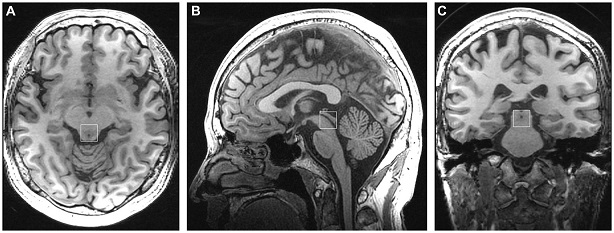COVID-19 News: Magnetic Resonance Spectroscopy Shows Altered Metabolites In The Periaqueductal Gray Region Of COVID-19 Individuals With Headaches!
Nikhil Prasad Fact checked by:Thailand Medical News Team Jan 05, 2024 1 year, 11 months, 2 weeks, 4 days, 10 hours, 38 minutes ago
Unraveling the Enigma of COVID-19 Headaches
Headaches have emerged as one of the most prevalent symptoms associated with severe acute respiratory syndrome coronavirus 2 (SARS-CoV-2) infection. During the acute phase of coronavirus disease 2019 (COVID-19), up to 50% of patients experience headaches, a condition that persists in 10% of individuals in the post-COVID phase. Intriguingly, even those without a history of prior headache-related disorders may develop new-onset headaches following SARS-CoV-2 infection. The presence of headaches in the acute phase is linked to a higher prevalence of long-term post-COVID headaches, leading to a diminished quality of life and increased general fatigue in long COVID-19 patients.
 Placement of the single voxel in the axial (A), sagittal (B), and coronal (C) planes in the periaqueductal gray
Placement of the single voxel in the axial (A), sagittal (B), and coronal (C) planes in the periaqueductal gray
Understanding the underlying mechanisms of headache development in the context of SARS-CoV-2 infection is crucial for effective prevention and management. Various potential pathophysiological mechanisms have been proposed, including direct viral invasion of the nervous system, cytokine release syndrome, innate immune response, cerebral bioelectrical dysfunction, and activation of the trigeminovascular system. Despite the high frequency of headaches in COVID-19 patients, the exact mechanisms remain incompletely understood, prompting the need for focused research.
This
COVID-19 News report delves into the groundbreaking research conducted at the Hangzhou TCM Hospital Affiliated to Zhejiang Chinese Medical University in Zhejiang Province, China, utilizing proton magnetic resonance spectroscopy (1H-MRS) to investigate altered metabolites in the periaqueductal gray (PAG) region of COVID-19 patients with headaches.
The Role of Periaqueductal Gray (PAG) in COVID-19 Headaches
The periaqueductal gray (PAG), a critical brain region within the endogenous analgesia system, has been implicated in pathological changes associated with different types of headaches. Given its involvement in the modulation of nociceptive processing, it is reasonable to hypothesize that the PAG may play a significant role in the pathophysiology of COVID-19 headaches. However, there has been a notable gap in research focusing on the PAG in the context of COVID-19 headaches.
Proton magnetic resonance spectroscopy (1H-MRS) emerges as a non-invasive method to study tissue metabolism by examining the magnetic properties of hydrogen atomic nuclei. This technology allows for the in vivo measurement of various metabolites and neurotransmitters, providing insights into dysregulation in excitatory and inhibitory processes, altered energy metabolism, changes in neuronal function, and variations in cell density. The present study aims to bridge the existing gap by investigating alterations in PAG metabolites before and after COVID-19 infection in individuals who experienced headaches during the acute phase, utilizing 1H-MRS technology.
Results - Unveiling Metabolite Changes in PAG
The study initially recruited sixteen participants with COVID-19-related headaches, along with fiv
e participants who did not experience headaches during the acute phase. However, two participants were excluded due to unsatisfactory spectral quality. The final analysis included fifteen participants with COVID-19 headaches and four participants without headaches, all experiencing mild COVID-19 without the need for hospitalization. The demographic and clinical characteristics showed no significant differences in SAS and SDS scores among participants before and after infection.
After infection, a significant elevation in the combined glutamine and glutamate/total creatine ratio (Glx/tCr) was observed in the PAG (p = 0.039). This increase was not observed in participants who did not experience headaches. No statistical differences were found in other metabolite ratios, including NAA/tCr, tCho/tCr, and MI/tCr, between the two groups (all p > 0.05). Notably, the tCho/tCr ratio in the pre-infection group exhibited a negative correlation with the duration of headache during the acute phase of COVID-19 (r = -0.617, p = 0.014).
Deciphering the Implications of PAG Alterations
This study stands as the first to focus on PAG changes in patients experiencing COVID-19 headaches. The elevated Glx/tCr ratio observed in the PAG after infection suggests an increased analgesic effect, implicating the activation of glutamatergic pathways connecting the PAG with the rostral ventromedial medulla. This activation has been associated with the suppression of nociception, supporting the idea that heightened Glx/tCr may serve as a self-protective response against headaches.
Furthermore, the negative correlation between the pre-infection tCho/tCr ratio and the duration of headaches during the acute phase highlights the potential role of altered membrane turnover or changes in cell density in PAG function. Dysfunction in the PAG, indicated by lower pre-infection tCho/tCr ratios, may contribute to prolonged headache duration, offering a novel avenue for clinical strategies to manage COVID-19-related headaches effectively.
Limitations and Future Directions
Despite the longitudinal design, the study acknowledges certain limitations, including the relatively small sample size. Future research with a larger cohort is essential to enhance the generalizability of the results. Additionally, the focus on patients with headaches during the acute phase prompts the need for extended research involving individuals with long COVID-19 headaches for a more comprehensive understanding of PAG's role.
Conclusion - Paving the Way for Innovative Clinical Strategies
In conclusion, this pioneering study sheds light on the crucial role of the PAG in the pathophysiology of COVID-19 headaches. The observed alterations, including an increased Glx/tCr ratio post-infection and a correlation between pre-infection tCho/tCr ratio and headache duration, provide valuable insights into the potential mechanisms underlying headaches in COVID-19 patients. These findings may open new avenues for innovative clinical strategies aimed at enhancing PAG function to reduce the incidence and duration of COVID-19-related headaches, ultimately improving the overall quality of life for affected individuals. As the world continues to grapple with the consequences of the COVID-19 pandemic, this research contributes significantly to our understanding of the virus's impact on neurological function and offers hope for more targeted therapeutic interventions.
The study findings were published in the peer reviewed journal: Frontiers In Neurology.
https://www.frontiersin.org/articles/10.3389/fneur.2023.1323290/full
For the latest
COVID-19 News, keep on logging to Thailand Medical News.
